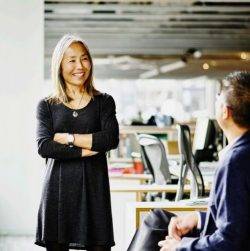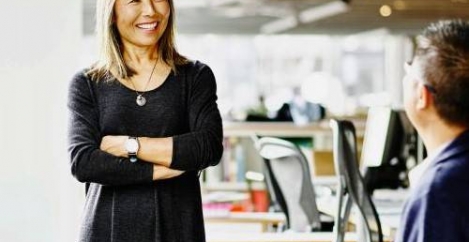February 10, 2017
Connectivity, innovation and uncertainty are driving workplace change, claims report 0
 Sodexo has published its 2017 Global Workplace Trends report, which claims to define the most critical factors affecting the world’s workers and employers. According to the report, the trends portray a workplace that blends work life with outside life, catering to employee needs through improvements in wellness, space design and learning programs. “With this piece, we’ve distilled key findings from different sectors, generations and countries to produce a report that provides a holistic view of the global workplace,” said Sylvia Metayer, CEO, Worldwide Corporate Services segment, Sodexo. “It’s critical for business leaders to recognise the underlying trends driving change, to evaluate their significance and stay ahead of—rather than follow—them.”
Sodexo has published its 2017 Global Workplace Trends report, which claims to define the most critical factors affecting the world’s workers and employers. According to the report, the trends portray a workplace that blends work life with outside life, catering to employee needs through improvements in wellness, space design and learning programs. “With this piece, we’ve distilled key findings from different sectors, generations and countries to produce a report that provides a holistic view of the global workplace,” said Sylvia Metayer, CEO, Worldwide Corporate Services segment, Sodexo. “It’s critical for business leaders to recognise the underlying trends driving change, to evaluate their significance and stay ahead of—rather than follow—them.”
The featured 2017 Sodexo Workplace Trends include:
- The Agile Organisation: Organisations are seeking the holy grail of agility—speed plus stability—with an ultimate goal of responding to new conditions, all while keeping employees agile, too, by using disciplines such as mindfulness.
- The Rise of Cross-Workplaces: The newest iteration of collaborative workspaces takes co-working to a new level, with organisations not only sharing physical space and resources but also intentionally structuring interactions across boundaries that encourage problem-solving approaches in order to combine strengths and address global issues.
- Employees Without Borders: The sheer spread and scale of the relocation of workers, in both emerging and developed economies, is driving new opportunities to demonstrate inclusive leadership through evaluating skill needs, availability, location benefits and effective cultural integration.
- The New-Gen Robotics: Robots have been in the workplace for years, and advances in artificial intelligence have led to organisations increasingly using them for jobs that humans used to perform. The newest discussion: exploring the success of robots, especially as they collaborate with people on uniquely human jobs.
- Intergenerational Learning: As people continue to live and work longer, all workers are forcing companies to think differently about hierarchical and traditional employee learning. Employees of all generations are teaching one another from their own experiences and driving a new culture of personal development.
- Personal Branding Goes to Work: Which brand leads? Personal branding is taking on a new life and getting deeper scrutiny, as employers look to understand potential risks and leverage the power of employees’ personal brands for the good of the company.
- Redefining the Workplace Experience: From physical space and technology to virtual work considerations and amenities, the way workers experience their surroundings is key to a happy workforce.
- The 2030 Agenda for Sustainable Development: The 2030 UN Sustainable Development Goals (SDGs) call on organisations to work together and with government toward a shared vision. The way businesses interpret and adapt practices will affect not only the progress toward meeting the SDGs but also the needs of a workforce hungry for positive change. (“Sustainability” as a buzzword is being upstaged by the all-important goals codified at the United Nations.)
- Unlocking the Potential of Millennial Talent: Why do we need to better understand millennials? Grasping the unique set of attributes that Gen Y and their younger siblings, Gen Z, bring to the work table gives us a view into the future of the workplace.
- Wellness 3.0: Moving beyond thinking of workplace wellness programs as sources for “fixing” or preventing health problems, they are now being viewed as potential catalysts for healthy living for employees, their families and the community at large.



















